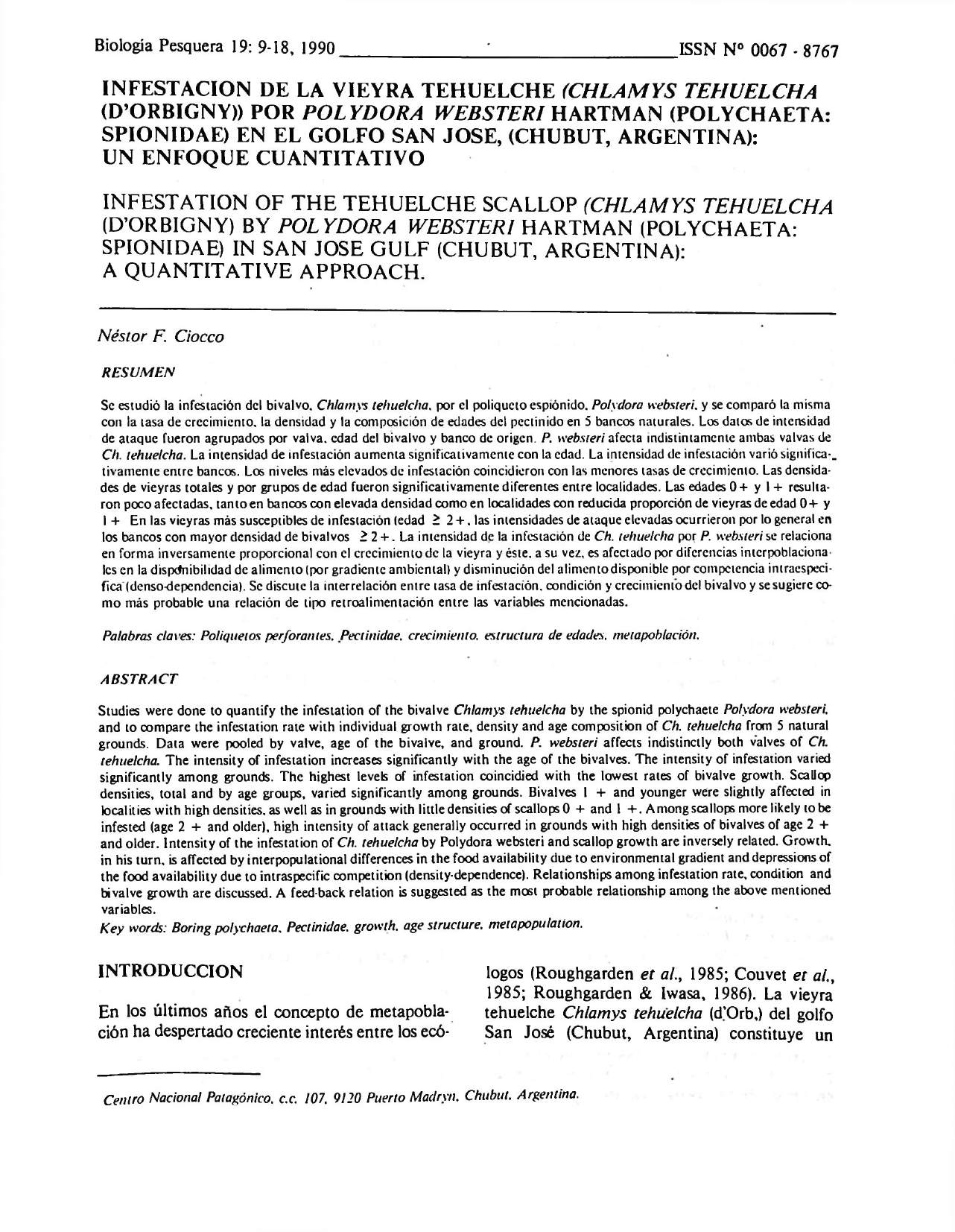Infestación de la Vieyra (CHLAMYS TEHUELCHA (D’ORBIGNY)) por Polydora websteri HARTMAN (POLYCHAETA: SPIONIDAE) en el Golfo de San José, (CHUBUT, ARGENTINA): un enfoque cuantitativo.
DOI:
https://doi.org/10.21703/0067-8767.1990.19.2539Palabras clave:
Poliquetos perforantes. Pectinidae. crecimiento, estructura de edades, metapoblación.Resumen
Se estudió la infestación del bivalvo. Chlamys tehuelcha. por el poliqueto espiónido. Polydora websteri. y se comparó la misma con la lasa de crecimiento, la densidad y la composición de edades del pectinido en 5 bancos naturales. Los datos de intensidad de ataque fueron agrupados por valva, edad del bivalvo y banco de origen. P. websteri afecta indistintamente ambas valvas de Ch. tehuelcha. La intensidad de infestación aumenta significativamente con la edad. La intensidad de infestación varió significa-, lisamente entre bancos. Los niveles más elevados de infestación coincidieron con las menores tasas de crecimiento. Las densidades de vieyras totales y por grupos de edad fueron significativamente diferentes entre localidades. Las edades 0 + y 1 + resultaron poco afectadas, tan toen bancos con elevada densidad como en localidades con reducida proporción de vieyras de edad 0+ y I + En las vieyras más susceptibles de infestación (edad 2 2 +. las intensidades de ataque elevadas ocurrieron por lo general en los bancos con mayor densidad de bivalvos 2 2 +. La intensidad de la infestación de Ch. tehuelcha por P. websteri se relaciona en forma inversamente proporcional con el crecimiento de la vicyra y éste, a su vez, es afectado por diferencias interpoblacionales en la disponibilidad de alimento (por gradiente ambiental) y disminución del alimentodisponiblc por competencia intraespecifica (denso-dependencia). Se discute la interrelación entre tasa de infestación, condición y crecimiento del bivalvo y sesugierc como más probable una relación de tipo retroalimcntación entre las variables mencionadas.


